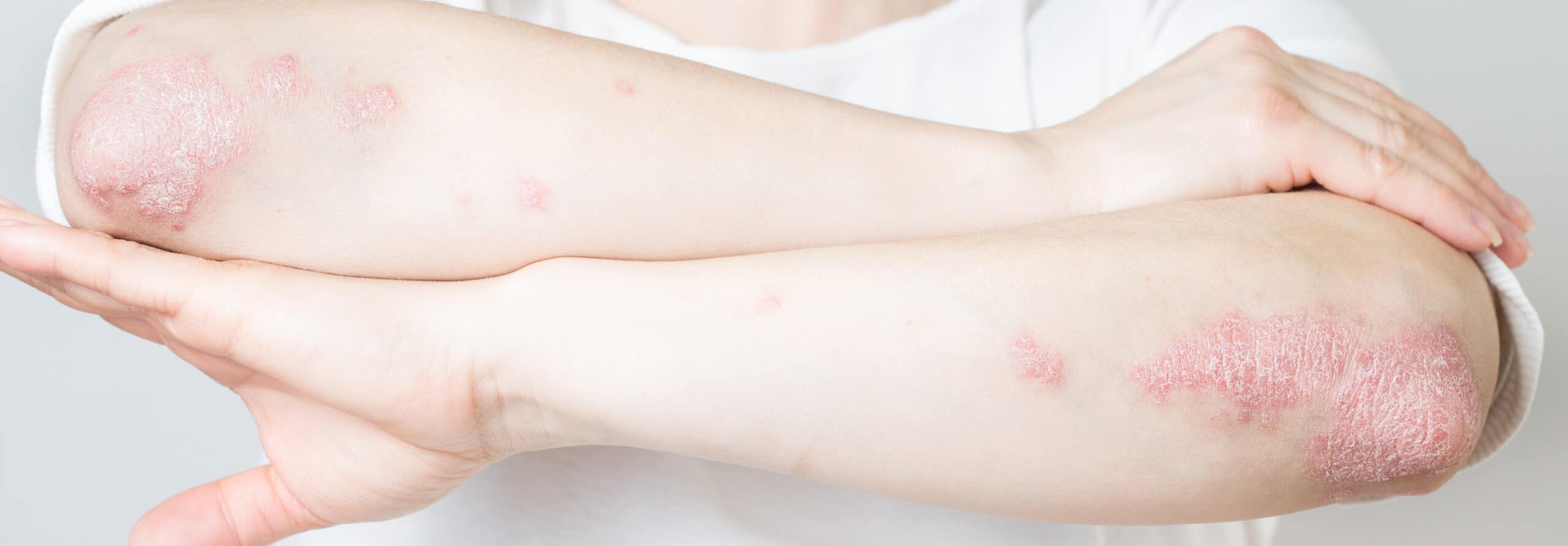Psoriasis Treatment
What is Psoriasis?
Psoriasis is a skin disorder in which the cells of the skin multiply much faster than normal. This causes the skin to create bumpy red patches with white scales. These patches can appear anywhere but occur most frequently on the knees, elbows, lower back and scalp. It is not contagious and does not pass from person to person. Typically, psoriasis appears for the first time in early adulthood. Psoriasis is a chronic disorder and can heal and reappear throughout someone’s life.
Who Gets Psoriasis?
The cause of psoriasis is multifactorial. It can set in at any age, but the most common age of onset is in the teens and twenties. There seems to be a genetic link to psoriasis, so people with a family history are at a higher risk.
Signs and Symptoms of Psoriasis
There are several signs of psoriasis. Symptoms to look for include:
- Plaques of reddened skin
- Itchiness and pain on the plaques
- Silver-colored scales on the patches of affected skin
- Discoloration and pitting in the nails
- Detachment of the nail from the nailbed
- Crusting scales on the scalp
Between 10% and 30% of patients with psoriasis also develop psoriatic arthritis, which causes pain and swelling in the joints.
What Causes Psoriasis?
There is no known cause of psoriasis, but experts believe it may be due to a combination of immune system issues that lead to inflammation and genetic and environmental triggers. Psoriasis tends to run in families but it often skips generations. Environmental triggers that can lead to psoriasis include:
- Cuts or scrapes
- Surgery
- Stress
- Strep
- Blood pressure medications
- Antimalarials
Patients with a personal or family history of psoriasis should avoid triggers as much as possible.


